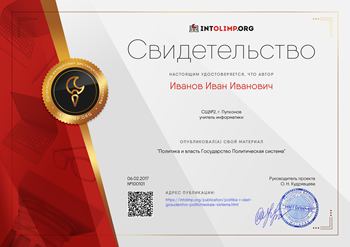Brief information about copper production
Abstract: Almalyk Mining and Metallurgical Plant plans to increase copper production to 400 thousand tons by 2029. Almalyk Mining and Metallurgical Combine (AGMK) plans to increase copper production to 400 thousand tons in 2020-2028, follows from the decree of the President of Uzbekistan Shavkat Mirziyoyev of May 26. According to the document, the project for expanding the production of non-ferrous metals at AGMK is divided into two stages. In 2020-2025, the plant plans to build an open pit at the Yoshlik-I deposit, as well as a new copper-processing plant (MOF) with a processing capacity of 60 million tons of ore per year.
According to the calculations of the plant, it is planned to build a factory of such capacity for the first time in the CIS. For its implementation at AGMK, similar productions were studied at copper quarries in Chile and Peru. As Gazeta.uz was informed at the plant, “the uniqueness of the new factory will be in the use of a rational scheme for the enrichment of minerals, which, among other things, will increase the production of molybdenum and gold”. The resolution approved the proposal of the AMMC to attract the Russian Renaissance Heavy Industries (a subsidiary of the Turkish Ronesans Holding) for the construction of the MOF. Two contracts will be signed with the company - for the execution of engineering works and design until the end of 2020, as well as for the supply of equipment on a turnkey basis. The implementation of the first stage will make it possible to increase the output of copper at the plant to 290 thousand tons, gold - up to 38 tons, silver - up to 203 tons. In February of this year, during the visit of Shavkat Mirziyoyev to Turkey with Ronesans Holding, agreements were reached on the implementation of projects in metallurgy, medicine and real estate in Uzbekistan worth about $ 8 billion. In particular, the modernization of the AMMC provides for the attraction of funds for $ 4.1 billion. The second stage of the project (2022–2028) involves the expansion of the Yoshlik-I open pit capacity and the construction of another MPF, already the fourth at the AGMK, to process 50 million tons of ore per year. This will increase the production of cathode copper - up to 400 thousand tons per year, gold - up to 50 tons, silver - up to 270 tons.
Keywords: Copper, metal, : spiral classifier, hydrocyclone, flotation, depressors.activators, aollectors, foaming agents, slag layer, oxygen flare,
Copper is a ductile, golden-pink transition metal. The density of copper is 8.93 g / cm3. The melting point is 1083 ° C and the boiling point is 2567 ° C.
1. The ore contains about 0.35% Cu. Deposits: Kalmakir deposit near Almalyk region. Recently discovered deposits: "Yoshlyk-1" and "Yoshlyk-2" (previous "Dalnee")
Minerals: mainly CuFeS2 - chalcopyrite, additional: CuS-covellite, chalcocite - Cu2S, pyrite-FeS2.

Copper mineral appearance
1. Preparation of copper ore for processing
Crushing in 3 stages:
At the first stage: the size of the ore lumps is 1500 - 350 mm; At the second stage: 350 - 75 mm; At the third stage: 75 - 10 mm;
In the first stage of crushing, jaw crushers are used, and in the second and third stages, cone crushers are used.

Jaw crusher for crushing large ores
3. Screening: screens or sieves are used, they can be of two different forms: vibrating and drum.
Screening values: +10 and -10 are the sizes of the holes in the sieves. In this case, + 10 - the remaining product on the sieve; -10 - product under a sieve;


Screens or sieves: vibrating screens on the right and drum screens on the left
Grinding: particles with a size of 0.074 mm (or 74 microns) must make up at least 80% of the total particles.
Grinding equipment: ball or rod mill, auto grinder, etc.
Grinding is carried out in an aqueous medium, and the resulting product is called "pulp".

Ball mill (MSHR brand)
Classification: Main equipment: spiral classifier, additional hydrocyclone. After the classification process, two products are formed: plum and sand.

Spiral classifier
Thickening: If necessary, a drain is given to the thickening process formed from the classification

Thickener or clarifier
3. Beneficiation: Copper occurs in the ore as sulphide minerals, so such minerals must be beneficiated by flotation.


Several methods and machines for flotation beneficiation
Types of reagents used in copper sulfide flotation beneficiation:
1. Regulators of the environment.
2. Depressors.
3. Activators.
4. Collectors.
5. Foaming agents.
The flotation process is based on the wetting and non-wetting properties of the minerals in the water, and the non-wetting sulphide minerals are separated. This is called in scientific language:
Hydrophobic - does not get wet (water is not wettable);
Hydrophilic - absorbs water (water is wettable).
The resulting product is called "Concentrate". The Copper Smelter of the Almalyk Mining and Metallurgical Combine (AGMK) produces a concentrate containing 16-18% copper. The obtained sulfide copper concentrate is sent to the process of preparing a furnace charge.
A charge is a mixture of concentrate, flux and recycled materials, which is prepared for processing in a metallurgical furnace.
4. Matte melting (high temperature melting of charge materials): Sulfide copper concentrates are pyrometallurgically processed. AGMK uses 3 types of metallurgical furnaces for processing copper concentrates. It:
1-oven: "Reflective" oven (OP).

Reflective furnace schematic diagram

The principle of operation of reverberatory furnaces
Raw materials: 16-18% copper concentrate;
Temperature: 1250 - 1350 ° С;
Fuel: natural gas or fuel oil (supplied with oxygen through the burners).
Furnace lining (Lining): The furnace bottom is made of dinas and chrome-magnesite bricks, the cracks are filled with refractory soil. The charge is loaded through the humps onto the furnace roof. The moisture content in the charge is up to 8-10%.
The raw material placed in the kiln is liquefied, melted and oxidized in small quantities. As a result, two liquid layers are formed in the furnace bath:
- slag layer, consisting of a mixture of oxides and silicates at the top;
- and a matte layer consisting of a mixture of liquid sulphides at the bottom.
A mixture of gases consisting of CO2 from the combustion of natural gas and SO2 from the oxidation of sulfides and nitrogen from unreacted air is discharged through a pipe (pharmacy) at the top of the furnace. The oven's pharmacy will be made of fireclay bricks. The resulting slag is removed through a tubular metal cord (or siphon) in the slag layer of the furnace, and the matte is discharged from the bottom of the furnace on both sides with a tubular metal cord or siphon and poured into cast iron vessels (for example, into a ladle).
Slag composition: 0.7% Cu, 2FeO SiO2, CaO SiO2
Matte composition: 25% Cu, Cu2S, FeS, Fe2O3
Waste gases: 1-2% SO2 remaining CO2 and N2
Disadvantages: consumes a lot of fuel. For example, 1 ton of raw materials consumes 150-200 kg of fuel.
Process reactions:
4CuFeS2 = 2Cu2S + 4FeS + S2
2FeS2 = 2FeS + S2
4CuS = 2Cu2S + S2
Lime (CaO) and quartz (SiO2) are used as flux. Converter slag is also added to the furnace. It contains 3.5% copper, of which only 80% can be converted to matte.
The name of the furnace is “reflective”, because the roof of the furnace has an arched shape (convex arc), and the heat radiated from below enters the arc and returns to the surface of the raw material, conserving thermal energy.
2-furnace: Oxygen-flare furnace (KFP)

How CFP works

Sectional view of the KFP furnace
Raw materials: 16-18% copper concentrate;
Temperature: 1350-1450 ͦC
The moisture content of the charge should not exceed 0.15%, that is, it must be very dry. No external fuels are supplied to the furnace. The furnace operates in 100% "autogenous" mode.
An autogenous process is the heating of a furnace by the heat generated by its exothermic reactions without the use of any external fuel.
Furnace size (in AMMC): furnace volume 580 m³; Useful area 120 m²; 2000 tons of ore can be processed in 1 day.
Furnace lining (Lining): fireclay and magnesite chromite bricks.
The kiln-dried batch is sprayed into the kiln under high aeration pressure through tuyeres at the front of the kiln where a torch is formed. This is why the furnace is called "oxygen flare". Some of the feedstock melts, and some Fe compounds are oxidized:
4CuFeS2 = 2Cu2S + 4FeS + S2
2FeS2 + 5O2 = 2FeO + 4SO2 + Q (exothermic)
2Cu2S + 3O2 = 2Cu2O + 2SO2 + Q (exothermic)
FeS + Cu2O = Cu2S + FeO
Quartz (and partly lime) is used as a flux.
Matte composition: 36-40% Cu (Cu2S; FeS)
Slag composition: 0.8-1% Cu (2FeO SiO2, CaO SiO2, Fe3O4)
Waste gas composition: 55-75% SO2 (suitable for producing H2SO4)
The feed rate of the oxygen-charge mixture through the tuyeres is 15-20 m / s. There will be 2 tuyeres and they will be located on either side of the oven. Slag and matte are removed from the rear of the furnace through special siphons. When blowing, it uses 95% of technical oxygen (by volume).
Slag temperature: 1200 ͦC
Matte temperature: 1150 ͦC
3-furnace: Melting in a liquid bath (PZhV) or Vanyukov furnace (PV).

Schematic view of the Vanyukov furnace

The process of operating the Vanyukov furnace

Structural view and section of the Vanyukov furnace
Raw materials: 16-18% Cu concentrate;
Temperature: 1250-1350 ͦ C
Moisture content in the charge: 6-8%;
Fuel: natural gas. Semi-autogenous process. Converter slag can be poured.
Matte: 45-50% Cu (Cu2S, FeS)
Slag: 0.5-0.6% Cu (2FeO SiO2, CaO SiO2)
Waste gases: 20 - 35% SO2 (suitable for producing H2SO4).
The flow rate of gas-oxygen air per lance is 1000 - 1100 m³ / hour.
The supplied air is 65-75% O2. The reactions are the same as in CFP, except that the reaction takes place in a layer of liquid slag. Raw materials are loaded into the furnace from above.
The reason the furnace is called molten bath smelting is that a gas-air mixture (65% O2) is sprayed through the furnaces in the slag layer of the furnace, and the feed falling onto this slag initially dissolves in the liquid slag and oxidizes in oxygen-enriched air. The purpose of supplying natural gas with air is to reduce the formation of magnetite (Fe3O4) in the natural gas slag and to keep the slag in liquid form using combustion energy. As a result, bubbles of CO2 and SO2 (in the slag) are formed and bubbled into the liquid bath. In this method, the melting of the raw material is accelerated. Matte and slag are removed from the furnace through a siphon on the opposite side. The siphon has a matte level of 1.7-2 m, and the height of the slag ejection hole is 2-2.2 m.The width of the furnace in the tuyere section is 2.5 m (acceptable), length 36: 2.5 = 14.4 m (36 - sectional area of tuyeres, m2).
5. Conversion


Schematic view of a converter furnace

Appearance and principle of operation of the converter
The resulting matte is blown into the converter with air (O2) to remove Fe and S. As a result, iron (and S attached to it) leaves the system, then S attached to Cu leaves the system, leaving rough Cu.
When the Fe-S-Cu system is exposed to O2 in a ternary system, Fe, which is more attractive to O2 than copper and sulfur, is oxidized, and then Fe oxide, which is formed by the oxidation of S and Fe, combines with quartz fluxes to form a layer slag.
Conversion chemical reactions:
FeS + O2 = FeO + SO2
CuS + O2 = Cu2O + SO2 Blister copper formation.
Cu2O + FeS = FeO + Cu2S
2Cu2O + Cu2S = 6Cu + SO2
2FeO + SiO2 = 2FeO SiO2 (Fe2SiO4)
6FeO + O2 = 2Fe3O4 (FeO · Fe2O3) Slag formation.
The conversion process consists of 2 stages:
In the first stage, iron is oxidized by the formation of a slag. The slag contains 3-4% Cu, which is poured into a bucket and sent to the furnace.
At the second stage (after the slag is unloaded), “white matte”, containing 75% copper, remains in the converter. Its chemical formula is Cu2S. This white matte is oxidized again with oxygen to produce blister copper. Blister copper contains 96-98% copper.
6. Fire refining of blister copper.
Blister copper is purified from Fe, Ni and S during fire refining. In fire refining, a mixture of natural gas and oxygen is burned in the kiln, which heats the kiln. Graphite or other carbon reducing agents can be used to reduce oxidized copper. The furnace in which the fire refining process is carried out is called the anode furnace. Process temperature: 1100 - 1200 ͦ C.

Fire refining furnace

Anode furnace: appearance
The copper content in purified blister copper is 99.4–99.6% Cu. The reason it is called an anode furnace is because the refined metal obtained from this furnace is poured into a copper anode mold.
7. The cast copper anode is electrolytically refined. During electrolysis, the copper anode dissolves and adheres to the cathode.
The anode is 99.6% copper and the cathode is 99.99% copper.
Electricity is supplied at a voltage of + 0.35 volts. The reason this voltage is applied is to ensure that only copper dissolves. Since the potential of the Cu electrode is + 0.34 V. The reason for this electric current is that only Cu in the anode dissolves and passes to the cathode, and 0.4% of metals such as Au, Ag, Se, Te are deposited. It is also called a dore mix. Copper sulphate and sulfuric acid (H2SO4) act as an electrolyte. A current of 16000 A (amperes) is supplied to the AGMK to increase performance.
Each bath has 33 anodes and 34 cathodes. The reason for the large number of cathodes is that when both sides of the anode are melted and therefore the electrodes in the bath start at the cathode and end at the cathode for complete copper reduction.

Electrolytic refining of anode copper
8. The obtained 99.99% copper cathodes are transferred to the consumer and precipitates during the processing of Au, Ag, Se, Te sludge. In this case, gold and silver are separated by refining in an induction furnace.

99.99% copper cathode
Various primary parts are made of copper cathodes. Copper cathodes are melted, cooled and machined to form copper coils (such as wire rods).

Copper cathode parts manufacturing process
Reference.
1. А.А. Yusupkhodjayev, Sh.Т. Khojiev, J. Usarov. Reasons of copper loss with slag// Сборник статей Международной научно-практической конференции “Управление социально-экономическими системами: теория, методология, практика”, состоявшейся 15 июня 2017 г. в г. Пенза. // МЦНС «Наука и Просвещение», г. Пенза, 2017, Часть 1, № 190. С.22 –23.
2. А.А. Yusupkhodjayev, Sh.Т. Khojiev, V.K. Nodirov. Modern state of technology of copper extraction// Сборник статей победителей VIII Международной научно-практической конференции “Современная экономика: актуальные вопросы, достижения и инновации”, состоявшейся 20 июня 2017 г. в г. Пенза. // МЦНС «Наука и Просвещение», г. Пенза, 2017, Часть 2, № 191. С.59 –61.
3. M.M. Yakubov, A.A. Yusupxodjayev, Sh.T. Hojiyev. Eritish jarayonida misning shlak bilan isrofini kamaytirish yo’llari // Kompozitsion materiallar. Toshkent, 2017, №1. 18 – 19 b.
4. Yusupkhodjayev A.A., Khojiev Sh.T., Kimsanboeva G.A. Studying of the clinker coating formed on internal the laying of the oxygen-torch furnace at fusion of sulphidic copper concentrates // Сборник статей XIII Международной научно-практической конференции “European research”, состоявшейся 7 декабря 2017 г. в г. Пенза. // МЦНС «Наука и Просвещение», г. Пенза, 2017, Часть 1, № 248. С. 62 – 65.
5. Samadov A.U., Khojiev Sh.T., Buzurkhanova F.S., Ruziev Z.N. Perspective method of smelting low-sulfur copper concentrates // Научные достижения и открития современной молодёжи: сборник статей III Международной научно-практической конференции. – Пенза: МЦНС “Наука и Просвещение”. – 2018. С. 38 – 41.
6. Khojiev Sh.T., Ruziev Z.N., Ochildiev K.T. The development of non-waste technology in mining and metallurgical productions // Сборник статей II Международной научно-практической конференции “Advanced Science”, состоявшейся 17 января 2018 г. в г. Пенза. // МЦНС «Наука и Просвещение», г. Пенза, 2018, Часть 1, № 268. С. 68 – 71.
7. Yakubov M.M., Khojiev Sh.T., Yavkochiva D.O. Studying of laws of smelting processes of sulfide concentrates // European Scientific Conference: сборник статей XII Международной научно-практической конференции. В 2 ч. Ч. 1. – Пенза: МЦНС “Наука и Просвещение”. – 2018. С. 91 – 93.
8. Юсупходжаев А.А., Хожиев Ш.Т., Исмаилов Ж.Б. Изучение свойства шлаков медеплавильных заводов // Высокие технологии, наука и образование: Актуальные вопросы, достижения и инновации: сборник статей II Международной научно-практической конференции. – Пенза: МЦНС “Наука и Просвещение”. – 2018. С. 28 – 30.
9. Хожиев Ш.Т., Очилдиев К.Т., Хотамкулов В.Х. Переработка медно-алюмосиликатных руд // Наука и инновации в XXI веке: Актуальные вопросы, открытия и достижения: сборник статей XI Международной научно-практической конференции. В 3 ч. Ч. 1. – Пенза: МЦНС “Наука и Просвещение”. – 2018. С. 142 – 144.
10. Валиев Х.Р., Хожиев Ш.Т., Файзиева Д.К. Исследование селективного извлечения металлов из титаномагнетитовых руд // Наука и инновации в XXI веке: Актуальные вопросы, открытия и достижения: сборник статей XI Международной научно-практической конференции. В 3 ч. Ч. 1. – Пенза: МЦНС “Наука и Просвещение”. – 2018. С. 145 – 147.
11. Yusupkhodjaev A.A., Khojiev Sh.T., Ismailov J.B. Recycling of slag from copper production // Инновационные процессы в науке и образовании: сборник статей Международной научно-практической конференции. В 3 ч. Ч. 1. – Пенза: МЦНС “Наука и Просвещение”. – 2019. С. 51 – 53.
12. Yusupkhodjaev A.A., Khojiev Sh.T., Valiev X.R., Saidova M.S., Omonkhonov O.X. Application of Physical and Chemical Methods for Processing Slags of Copper Production // International Journal of Advanced Research in Science, Engineering and Technology. Vol. 6, Issue 1, January 2019. pp. 7957 – 7963.
13. Khojiev Sh.T. Pyrometallurgical Processing of Copper Slags into the Metallurgical Ladle // International Journal of Advanced Research in Science, Engineering and Technology. Vol. 6, Issue 2, February 2019. pp. 8094 – 8099.
14. Юсупходжаев А.А., Хожиев Ш.Т., Абдукаримова Ф.У., Толибова Х.Г. Плавка в жидкой ванне освоена на медеплавильном заводе Алмалыкского горно-металлургического комбината // Наука и инновации в XXI веке: Актуальные вопросы, открытия и достижения: сборник статей XII Международной научно-практической конференции. – Пенза: МЦНС “Наука и Просвещение”. – 2019. С. 71 – 73.
15. Юсупходжаев А.А., Хожиев Ш.Т., Толибова Х.Г., Абдукаримова Ф.У. Комплексная переработка тонкого пыла медеплавильного производства // Наука и инновации в XXI веке: Актуальные вопросы, открытия и достижения: сборник статей XII Международной научно-практической конференции. – Пенза: МЦНС “Наука и Просвещение”. – 2019. С. 74 – 76.
16. Khojiev Sh.T., Irsaliyeva D.B., Muhammadiev Sh.A., Ergasheva M.S. Method for recycling of converter slags into the metallurgical ladle // Современная наука: Актуальные вопросы, достижения и инновации: сборник статей VI Международной научно-практической конференции. – Пенза: МЦНС “Наука и Просвещение”. – 2019. С. 56 – 58.
17. Yusupkhodjaev A.A., Khojiev Sh.T., Abdikarimova F.O’., Tolibova X.G’. Method for pyrometallurgical processing of copper casting slags // Современные технологии: Актуальные вопросы, достижения и инновации: сборник статей XXVII Международной научно-практической конференции. – Пенза: МЦНС “Наука и Просвещение”. – 2019. С. 62 – 64.
18. Khojiev Sh.T., Tolibova X.G’., Abdikarimova F.O’., Rakhmataliev Sh.A. Solubility of copper and cobalt in iron-silicate slags // Современные технологии: Актуальные вопросы, достижения и инновации: сборник статей XXVII Международной научно-практической конференции. – Пенза: МЦНС “Наука и Просвещение”. – 2019. С. 65 – 67.
19. Yusupkhodjaev A.A., Khojiev Sh.T., Suyunova M.N., Babaev B.S. Mechanical and physico-chemical copper losses in slags // Современные технологии: Актуальные вопросы, достижения и инновации: сборник статей XXVII Международной научно-практической конференции. – Пенза: МЦНС “Наука и Просвещение”. – 2019. С. 68 – 70.
20. Khojiev Sh.T., Suyunova M.N., Babaev B.S., Yavkochiva D.O. Recycling of copper slags with local reductants // Современные технологии: Актуальные вопросы, достижения и инновации: сборник статей XXVII Международной научно-практической конференции. – Пенза: МЦНС “Наука и Просвещение”. – 2019. С. 71 – 73.







